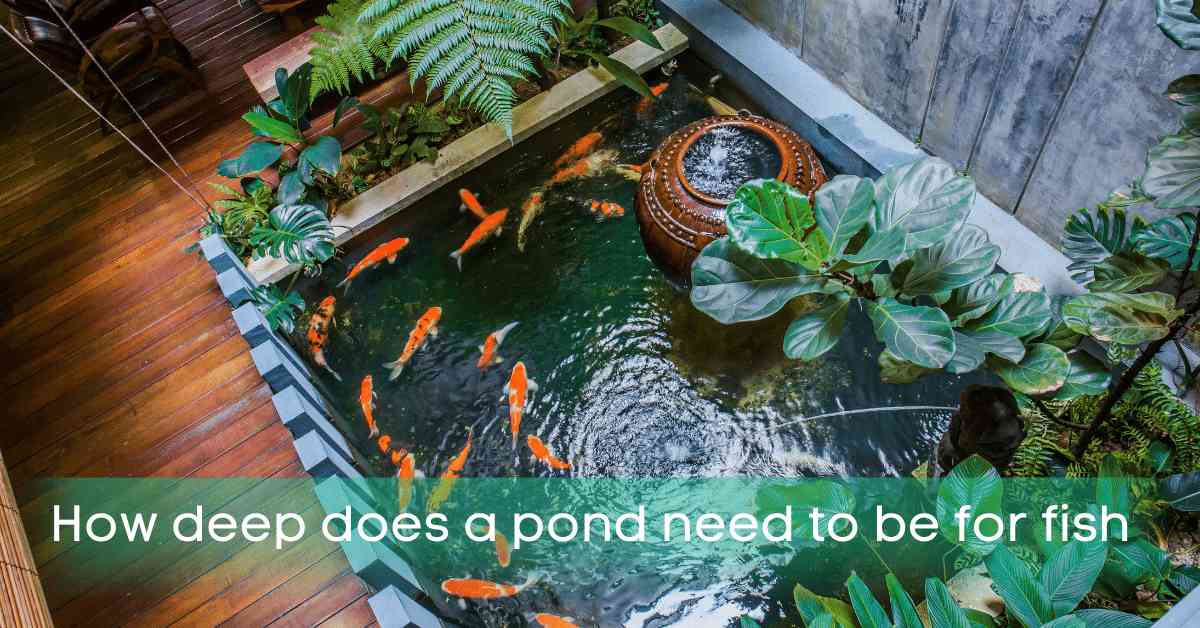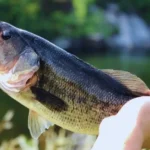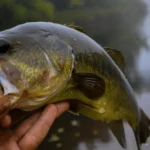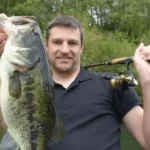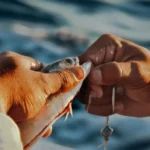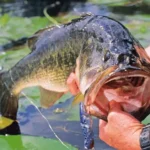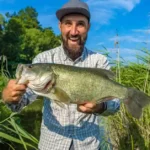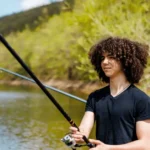Getting a permit is one of the most important things you must do to build a fish pond. Ask yourself, “How deep does the pond need to be?”
Generally, a depth of at least 3 feet is recommended for most fish species.
At World of Water, planning for your water garden can be fun and challenging. The depth of your pond is one of the most important things to consider when making your water garden. A healthy garden pond will not only look nice, but it will also be a place where aquatic life can live and grow. In this article, we’ll tell you everything you need to know to plan the proper depth for your garden pond, which will help you make a beautiful, thriving aquatic paradise.
How Deep Does a Pond Need to be for Fish? (Different Fish Species)
Now that we know a little more about the elements that determine pond depth, let’s have a look at the pond that is best suited for the following fish species:
- Koi and Goldfish: are the most common fish species in backyard ponds. They require a minimum pond depth of three feet. A pond of this depth provides sufficient space for the fish to swim and provides an ideal environment for aquatic plants.
- Catfish: are another popular fish species found in backyard ponds. They can thrive in shallow waters with a depth of 18 inches.
- Trout: requires a minimum pond depth of six feet. They are sensitive to temperature changes and require a consistent water temperature throughout the year.
- Tilapia: requires a minimum pond depth of four feet. They thrive in warm waters and need high oxygen levels to survive.
Determining the Ideal Pond Depth
Several things must be considered when deciding how deep a pond should be. The required depth will depend a lot on the size and type of your pond. Most of the time, it’s best to have a pond about 90cm or 3 feet deep. This gives the pond enough water volume and gives fish enough room to grow. But it’s important to remember that the depth of your pond must be suitable for the fish you want to keep. The weather in your area is another thing to think about. If you live in a place where there are a lot of or low temperatures, you may need to dig deeper to give your aquatic life a more stable home. Deeper ponds also provide more insulation and shade, which can help stop algae from growing.
Factors to Consider When Digging Your Pond
Several things must be taken into account when digging your pond.First, draw out the size and shape of your pond. It would help if you also considered how deep you want the hole to be and marked it out accordingly. If you want to keep fish, add shelves or steps so the fish can explore different depths.
It is crucial to ensure it is level and that the sides slope. You should also consider the soil type in your area and do what you can to prevent erosion or water seepage. Adding a liner can stop leaks and give aquatic life a more stable place.
(Fish ponds) How Deep do they Need to be for the Winter?
The optimal pond depth for overwintering fish depends on various factors, such as the climate, the type of fish, and the size of the pond. Generally, a pond depth of at least four feet is recommended to ensure fish survival during winter. This depth provides enough water volume to keep the pond from freezing solid while allowing sunlight to penetrate the water, which is essential for plant photosynthesis.
Larger fish require more oxygen than smaller fish. A deeper pond can provide a more stable environment to survive the winter.
Fish Survival in the Winter Can be Affected by Several Other Factors
Aside from pond depth, several other factors can affect the survival of fish during winter. Here are some tips to help ensure the survival of your pond’s inhabitants:
- Install a pond heater: A pond heater can keep a small pond area from freezing solid, providing a source of oxygen for fish.
- Use aeration: Aeration can help maintain oxygen levels in the water, preventing fish from suffocating.
- Remove debris: Decomposing organic matter can consume oxygen, reducing the amount available for fish. Regularly removing debris from the pond can help maintain optimal oxygen levels.
- Stop feeding your Fish: As the water temperature drops, fish’s metabolism slows, and they require food. Feeding fish during winter can lead to digestive issues and increase waste, reducing oxygen levels in the water.
Deep Does a Pond Need to be for Fish? (Factors Affecting Pond Depth)
Several factors affect the pond depth, such as the location, climate, and the type of fish you intend to keep. Here are some critical factors you should consider before determining the pond depth:
Location
The pond’s location plays a significant role in determining the pond’s depth. Suppose you live in an area with a hot climate. In that case, a shallow pond can lead to high water temperatures, affecting the oxygen levels and the overall health of the fish. In contrast, a deep pond in colder regions can prevent ice formation and help the fish survive through the winter.
Fish Type
Different fish species have varying depth requirements. For instance, koi and Goldfish require a minimum depth of three feet to thrive, while catfish can live in shallow waters at 18 inches.
Size of the Pond
The pond size also affects the depth requirements. A smaller pond requires less depth as it can be heated and aerated more efficiently than a larger pond.
Sun Exposure
Suppose your pond is exposed to sunlight for extended periods. In that case, it can lead to higher water temperatures, reducing the oxygen levels in the water. In such cases, a deeper pond can help regulate the temperature and provide a healthier environment for the fish.
Creating the Perfect Water Garden
Creating a water garden is a great way to add a touch of tranquility and beauty to your outdoor space. Whether you want to add a small fountain to your patio or create a larger pond in your backyard, a water garden can be a rewarding and enjoyable project for any skill level. How to design a beautiful water garden is covered here.
Location and Size
The first step in creating a water garden is choosing the correct location. You’ll want to find a spot with at least six hours of sunlight daily and some shade to protect your plants from excessive heat.Also, you should think about how big your water garden will be.A small fountain can be a great addition to a patio. However, if you’re looking to create a larger pond, you’ll need to consider factors like the slope of your yard, the pond’s depth, and the surrounding area’s size.
Design and Layout
Once you’ve chosen your location and size, it’s time to start thinking about the design and layout of your water garden. Think about the overall look you want to go for and any specific features you’d like to include, such as a waterfall or bridge. You’ll also need to consider the placement of your plants and any fish or other wildlife you plan to add.
Plants and Wildlife
The right plants can change everything. in creating a beautiful and natural-looking water garden. Consider a mix of submerged, floating, and marginal plants to create a diverse ecosystem that supports a variety of wildlife. Fish are another popular addition to water gardens, but make sure you choose the suitable species for your climate and the size of your pond. Monitoring the water quality is essential to ensure the health of your fish and plants.
Maintenance
Maintaining a water garden requires effort, but it doesn’t have to be overwhelming. Regular maintenance tasks like cleaning your pump and filters, removing debris, and trimming overgrown plants can help keep your water garden looking its best. You’ll also want to monitor the water quality regularly and make necessary adjustments to keep the ecosystem balanced.
Safety
It’s important to keep safety in mind when creating a water garden. Ensure your pond is deep enough to prevent accidental drowning, especially if you have children or pets. Consider adding a fence or other barrier around the pond to prevent anyone from falling in accidentally.
Conclusion
In the end, the best depth for a fish pond depends on the type and size of fish, the weather, and the size of the pond. Most fish species do best in water at least 3 feet deep. But bigger fish may need deeper water to live and grow. By thinking about these things, you can make sure that your fish pond is a healthy place where your fish can live and grow.
F.A.Q
What is the minimum depth required for a koi pond?
A koi pond should be 4 feet deep, at least (1.2 meters). This depth gives adequate area for fish to swim and thrive and enough water volume to preserve water quality. Koi fish need a deep pond due to their size and active swimming behaviors. A deeper pond can also manage water temperature and prevent freezing in colder climes.
Can I keep Goldfish in a shallow pond?
Goldfish can be kept in a shallow pond but must meet specific depth standards. A minimum depth of 2 feet (0.6 meters) is recommended to allow fish to swim and avoid temperature swings. Shallow ponds are more susceptible to algae growth and temperature variations, so proper filtration and care are needed to keep Goldfish healthy. The Goldfish’s number and size should determine the pond’s size and depth.
How deep should a pond be for tilapia?
Climate and fish size determine tilapia pond depth. In warmer climates, 3 to 6 feet (0.9 to 1.8 meters) is enough to sustain water temperatures and develop tilapia. Winter freezing may need a depth of 8 to 10 feet (2.4 to 3 meters) in colder areas. Raising larger tilapia may require deeper water. Regardless of depth, tilapia ponds need good aeration and filtration.
What is the ideal depth for a pond with multiple fish species?
Several fish species require different pond depths. Most fish species need a minimum depth of 3 feet (0.9 meters). Larger or special-needs fish may need deeper water.
Does the depth of a fishpond affect its maintenance requirements?
Fish pond depth affects upkeep. Shallow ponds may require more maintenance due to temperature variations and algae growth. Deeper ponds may require more equipment and work to maintain water circulation, oxygen levels, and quality.

